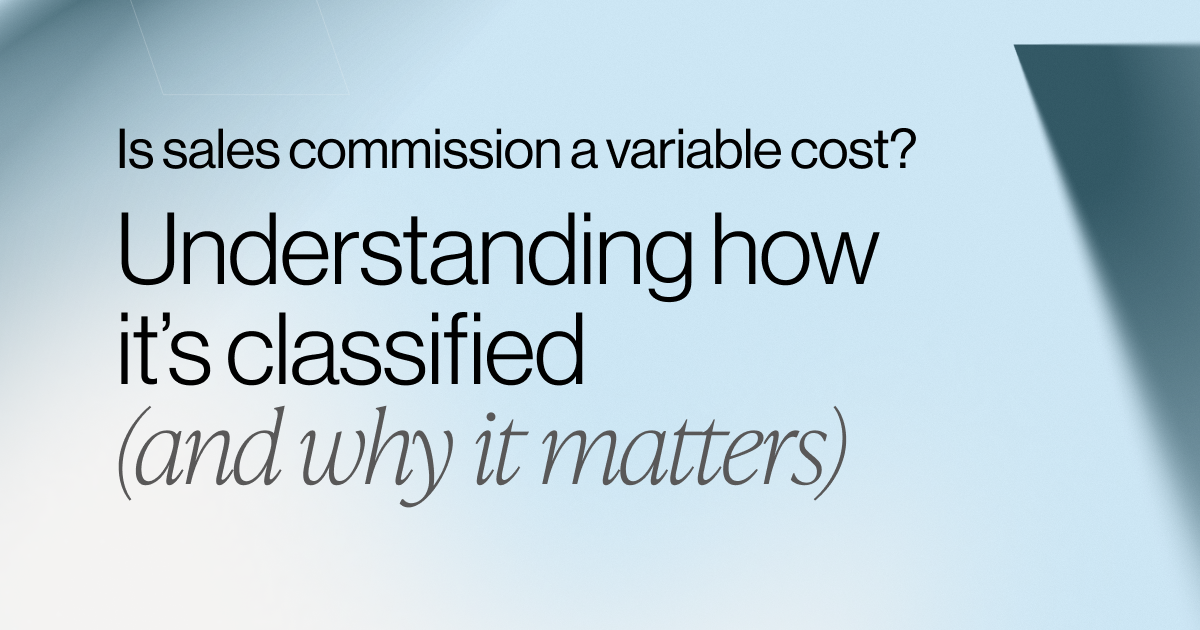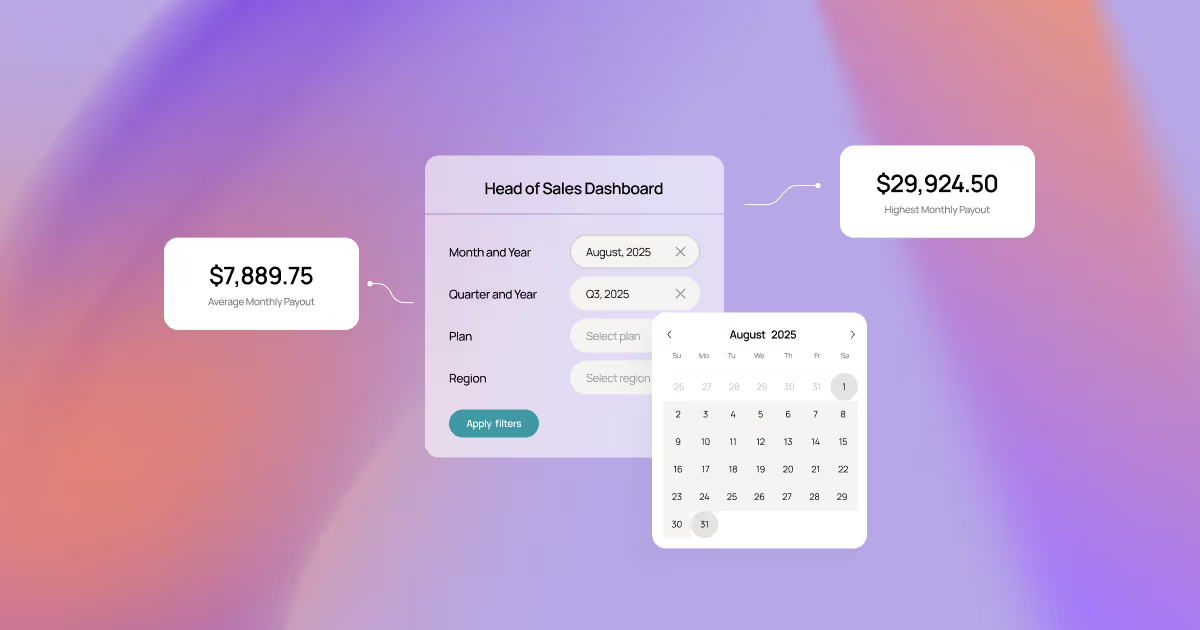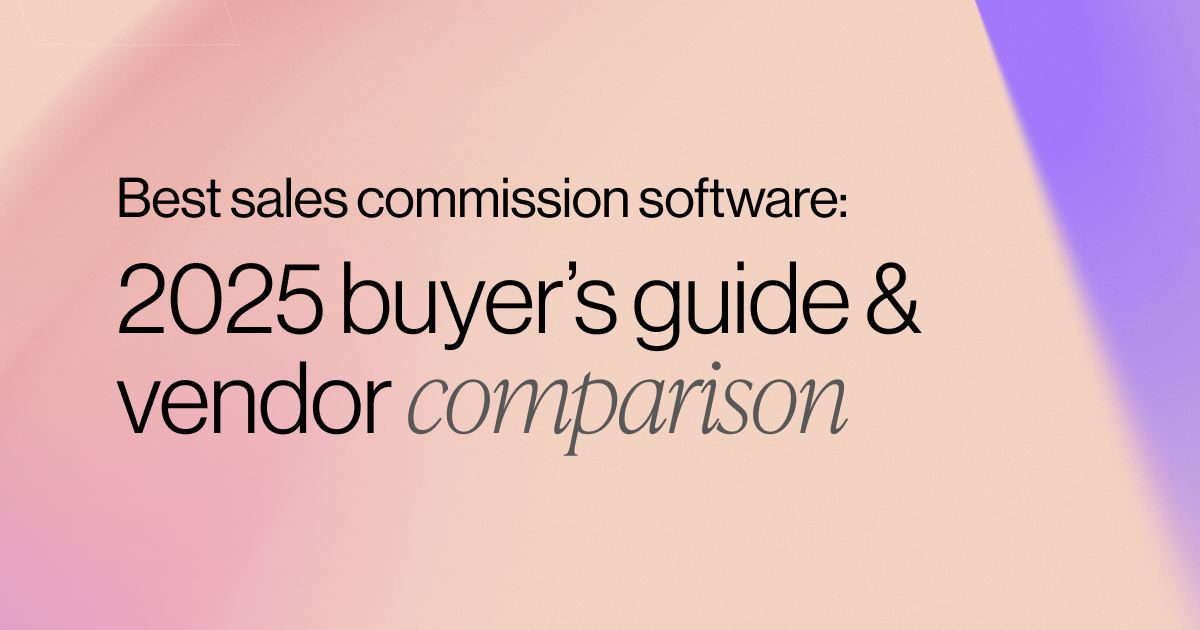How to Navigate ASC 606 Hurdles for Easier Commission Reporting
ASC 606 is an accounting standard that provides a comprehensive, industry-neutral revenue recognition model intended to increase financial statement comparability across companies and industries.
Breaking that down into layman’s terms, the regulation helps companies determine how much revenue to record and when to record it, while ASC 340 — a subset of 606 — guides companies on how to account for and amortize costs that are directly associated to that revenue.
In this post, we give a brief overview of the impact of ASC 606 and 340 on sales commissions reporting, and discuss some of the most widely-faced ASC 606 reporting challenges — along with how to overcome them.
ASC 606 and 340: Getting Into the Weeds
ASC 606 and 340 guide organizations in recognizing revenue from customer contracts, which includes sales compensation expense recognition. When sales commissions are earned and can easily be traced back to a sale, businesses should record a deferred asset and recognize expenses systematically over some defined period.
This easy-to-follow flowchart can help you determine when to apply ASC 340:

Common ASC 606 Challenges
The three most common issues faced with ASC 606 reporting are all related to complexity:
Data Complexity
To comply with ASC 606, companies must carefully maintain their commission data, and teams will typically be required to track transaction-level data to accurately classify commission costs. This can be challenging when tracking data in spreadsheets or an ICM solution, as the team may realize the need for more granular data tracking.
For example, while currently calculating commissions at the opportunity level, the team may find that they need to drill down to account for commissions at the product level when adopting 606.
Another example that highlights the challenges posed by data complexities is that while a sales commissions team might only collect and calculate data necessary for payouts, the accounting department may require additional data (Opportunity Type, for example, to distinguish net-new logos versus renewals) for accurate accounting treatment. To address the challenge, it’s crucial to identify a solution that takes into account the complexity of calculating commissions while also enabling flexibility in tracking various layers of commissions data.
Accounting Treatment Complexity
Navigating accounting policy decisions is no easy task. Most SaaS companies, for example, should amortize commissions over a customer benefit period, which is a fairly simple mathematical exercise, but determining that “benefit period” can be challenging in itself. Accounting policies can get even more complicated when commissions are related to professional services and must be amortized over time as services are completed. This layer of complexity requires companies to bring in more data from other systems, which can make matching a challenge.
This can become a bigger accounting nightmare when you factor in “implicit costs,” for example, a software company has one SKU and one price, but the cost is the split between licensing fee and customer support pricing and thus must be accounted for as such for ASC 606 reporting.
Spreadsheet Complexity
Waterfall schedules* can quickly become large and difficult to manage. For example, if you have four commission plans, each with a benefit period of 3 years, you’re ultimately looking at 144 overlapping amortization schedules to build and maintain. Not only does that take up a lot of time, it also leaves a whole lot of room for error.
*The schedule that dictates the process (and order) for amortizing costs, typically consisting of columns for each period of amortization, and rows for each tranche of costs to be amortized. The costs are funneled through each period until the useful life is fulfilled, hence the name "waterfall.”
ASC 606 Reporting: Spreadsheets vs an ICM Solution
There are pros and cons to relying on spreadsheets versus an ICM (Incentive Compensation Management) solution to calculate incentives and commissions in light of ASC 606 and 340.
Spreadsheets are inexpensive and generally flexible, but they also require a lot of work in the form of manual tasks, are rife with potential for human error, and can often crash when faced with larger data sets.
On the other hand, calculating commissions with an ICM delivers built-in automations and controls that reduce the risk of errors and save time. They can also handle a massive amount of data, integrate with other key data systems such as Salesforce, Netsuite, and Workday to limit manual tasks, and allow for simple uploading of historical data and true-up calculations based on compensation events such as clawbacks or churn. In addition, some ICM solutions offer out-of-the-box reports that surface better insights and allow for a smooth handoff to auditors.
When adopting an ICM to comply with ASC 606 reporting requirements, it’s important to determine certain policy and data considerations:
From a policy perspective, determine what costs should be capitalized based on your commission plan. Determine the appropriate revenue patterns to match commissions and suitable useful life for commission amortization (e.g., contract term, customer benefit period). Additionally, identify the customer benefit period for more accurate commission accounting.Finally, evaluate other costs to be included in commission accounting (e.g., payroll taxes, fringe benefits). These often get capitalized and amortized as well.
From a data perspective, there are several decisions that need to be made. You’ll need to determine the level at which the amortization needs to be calculated (e.g., product level, opp level). Be sure to identify the necessary data points to classify journal entries accurately. Decide whether to amortize at the asset or portfolio level. And finally, once you’ve decided to implement an ICM solution to address your commissions calculating and reporting needs, you’ll want to determine whether historical costs should be brought into the system for accounting purposes.
To learn more about how an ICM solution such as CaptivateIQ can help simplify sales commission reporting for ASC 606, be sure to watch our on-demand webinar How To Overcome ASC 606 Challenges.
.svg)








